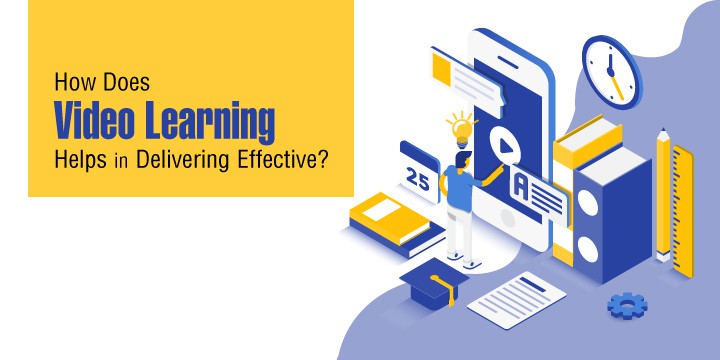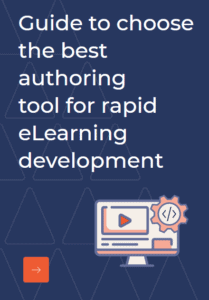You Click “Play” and are transported to an immersive experience. It is visual, auditory and at times sensory too. Most videos (at least the ones we Binge watch) take us on an emotional joyride and the content sticks. There is a fair share of meaningless content available online too, but that’s not the focus of discussion here.
We have earlier discussed about Using Videos to Deliver Impactful Learning and discussed the effective use of videos in eLearning too. But what exactly makes videos effective tools for training or how does video learning help in delivering effective training?
Multisensory Learning
As mentioned before, videos offer a holistic experience. It addresses visual, auditory and kinesthetic learning style or in other words it delivers a multisensory learning experience that increases the depth of learning. So, the concept seen as visual is reinforced when the voice over connects the gaps and makes the learners understand the concepts better if interaction is involved.
As the Chinese Proverb puts it, “Tell me and I’ll forget, show me and I may remember, involve me and I’ll understand.”
This kind of learning is advantageous because:
- It improves memory through redundancy, reinforcement and requires the utilization of the whole brain
- Recognition can be improved
- Hones Critical Thinking and Problem-solving capabilities
- Increases Concentration
Self-Explanatory Learning
A well created video explains itself. It facilitates trainings as it can be used as standalone modules for covering different categories of learning. Explainer videos successfully cover all the points for any particular topic. Moreover, videos can clearly depict the difference between ‘How to’ and ‘How not to’, and showcase clearly about the do’s and don’ts. Procedures showcased using videos are easier to follow and skills in this case are mastered easily and effectively.
Reduces Cognitive Load
Deriving from the Cognitive Load Theory proposed by Sweller and colleagues, learning experience has three components: intrinsic load, germane load and extraneous load. Learning design often revolves around decreasing the extraneous load or the cognitive effort that does not take the learner toward any of the desired learning outcome. This is what video-based learning successfully manages to do, by working in lines of the Cognitive Theory of Multimedia Learning that builds on the Cognitive Load Theory. Video learning as discussed earlier focuses on the two channels for information acquisition and processing in the working memory: a visual/pictorial channel and an auditory/verbal processing channel and balancing the channels is the key to decreasing the cognitive load.
Explaining Abstract Concepts
There are certain topics where the concepts are really abstract, video learning with the help of animations and abstract visuals can give them form, making it easier for the learners to wrap their minds around the concept. Videos of this kind can be easily created using Authoring tools and so the solution itself is cost and time efficient.
Multi-device Accessibility
If anything, learning today is multidevice, flowing seamlessly between devices. Video based content makes this even more efficient as videos are device agnostic. The only thing to be considered is to optimize the file size for faster loading and viewing without buffering.
Easy Implementation
As far as video learning goes, there is no requirement for specific technological integration or infrastructural requirement to incorporate it as a part of the training strategy. This saves cost and efforts in content creation as well as distribution/implementation. Effectiveness here is in terms of the faster deployment capability, making it a good option for sudden learning requirements.
Video learning and training effectiveness go a long way. Videos offer a new lease of life to the concept of learner engagement, provides larger scope for conceptualization and improves retention too. And with the growing rate of mobile video consumption, it has now become an integral part of organizational training strategy that supports mobility.
With 360-degree video, interactive video and Virtual reality devices in the mix video learning offers an immersive learning environment, that can translate to better performance, improved skills and meeting the organizational goals in a better manner.
Have you tried video-based learning yet? If not, its time to explore the incentives. Just drop us a message if you need assistance.



